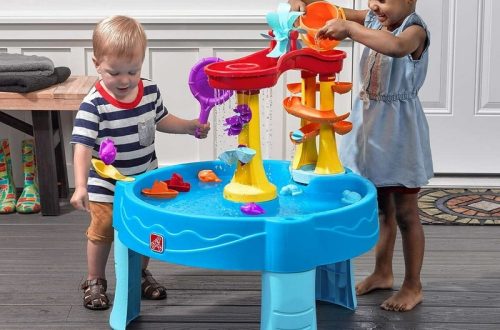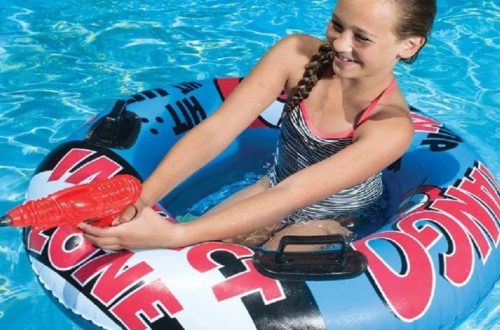The Importance of Setting Play Boundaries with Toy Guns
Establishing play boundaries is crucial when it comes to children and toy guns. Not only does it foster a sense of discipline, but it also ingrains an understanding of the significance and potential harm associated with guns, even if they are just toys. Parents should have clear rules that stipulate where and when a toy gun can be used. This could include not pointing a toy gun at people or pets, or limiting use to designated play areas away from public spaces.
Creating boundaries helps children differentiate between acceptable and unacceptable behaviors. It can prevent the blurring of lines between pretend play and actions that may be perceived as threatening. This distinction is essential for safety both within the home and in the wider community. Furthermore, when children learn to respect these boundaries, there is a reduced risk of them mistaking a real firearm for a toy gun should they ever encounter one.
Parents play a pivotal role in modeling respectful behaviors when handling a toy gun. They must enforce the rules consistently and also ensure that any play with toy guns is accompaniment by discussions reinforcing the toy’s nature and its appropriate use. This dual approach of structure and education forms the cornerstone of responsible toy gun play.
By taking these measures, parents contribute to a more mindful playtime where kids can enjoy their toy guns without causing concern or misunderstandings. It’s about striking a balance – one where children can explore their imaginations and engage in playful combat scenarios, all while understanding the real-world implications of their actions and the importance of respect and safety.
Choosing the Right Toy Guns for Your Children
Selecting a toy gun for your children involves careful consideration. Aim to choose toy guns that are brightly colored and distinctly different from real firearms. This helps ensure that children, as well as adults, can quickly identify the toy as a harmless play object. It is also advisable to avoid toy guns that make loud, realistic gunfire sounds, which could be unsettling or lead to confusion about the toy’s nature.
Consider the age and maturity level of your child. Toy guns that are too realistic may not be suitable for younger children. They may not yet understand the difference between real guns and toys. Instead, opt for toy guns designed with exaggerated features and fun elements that clearly signal they are meant for play.

The size and complexity of the toy gun should match your child’s ability to handle it safely. Large, cumbersome toys might be difficult for smaller children to control, which could lead to accidents. Compact, simple designs are usually better suited for younger kids. If a toy gun comes with projectiles, make sure they are made of soft, non-harmful materials.
By choosing the right toy guns, parents can help maintain a lighthearted atmosphere where play remains safe and enjoyable. This careful selection is an integral part of responsible toy gun play and contributes towards the goal of keeping playtime fun and hazard-free.
Supervision and Involvement in Toy Gun Play
Active supervision is key during toy gun play. It helps prevent accidents and teaches safety. Parents should always be present when younger children are playing with a toy gun. This way, they can step in if the play becomes rough or unsafe.
Involvement also means participating in play. Join in on the fun to guide the action and keep it light-hearted. Doing so can show children how to engage in playful scenarios without mimicking aggression or violence. Share in the excitement, but steer the narrative toward friendly competition or fantasy-based adventures.
Set time limits for play with a toy gun. This helps manage the duration and intensity of play sessions. Use a timer as a clear indicator of when playtime starts and ends. This routine reinforces structure around the activity.
Checking the toy gun before and after play ensures it remains in good condition. Look for any broken parts that could be dangerous. If a toy becomes damaged, put safety first and remove it from play.
Encourage children to put away their toy guns after play. This teaches responsibility and the importance of keeping toys in a safe place.
Remember, supervision and involvement are not just about oversight—they are opportunities for bonding and learning. Through these interactions, children grasp the importance of safe play with a toy gun. They also learn to respect the rules their parents set.
Educating Children on Gun Safety
Teaching gun safety is a vital part of toy gun play. Start these lessons early. Explain the difference between real weapons and toys. Stress that guns can hurt or even kill in real life. Kids must grasp this to play responsibly with a toy gun.
Use clear, simple language to discuss gun safety with your children. Include the ‘never point’ rule. It’s simple: never point a toy gun, or any gun, at someone else. This applies even if they know it’s a toy. Stress the importance of this rule often.
Show kids how to check if the toy gun is safe. Teach them to inspect their toys for broken parts. Explain why damaged toys must get put aside. Safety comes first, always.
Introduce safe handling habits. Show by example. When you handle a toy gun, do it with care. This way, children can see and copy the correct behavior.
Turn learning about gun safety into a game. Quizzes and scenarios can make it fun. Reward correct answers and safe behaviors. This makes the lessons stick better.
Revisit gun safety topics regularly. Keep the conversation going as your child grows. As they mature, tailor your approach. Use real-life examples if appropriate. This keeps the message relevant and fresh in their minds.
Remember, education is ongoing. It builds a foundation for safe toy gun play at home and beyond. It helps kids respect the power of guns.

Discussing the Difference Between Real and Toy Guns
Clear communication about the distinction between real firearms and a toy gun is essential. It prevents confusion that could potentially be dangerous. Parents are tasked with the important job of ensuring their children understand this difference.
Start by showing your child actual images of real guns compared to their toy versions. Highlight key features that distinguish real firearms, such as their color, shape, and size. Discuss the materials guns are made from versus the plastic of most toy guns.
Use actual news stories or events, if appropriate, to illustrate the serious nature and consequences of real guns. This helps to reinforce that while a toy gun can be part of fun and imagination, real guns are not to be viewed in the same light.
Involve children in setting up ‘safety checks’ for their toys. This can serve as a practical lesson in identifying their toys as being safe and clearly different from real weapons.
Role-play can be a valuable tool. Use pretend scenarios to practice what to do if they ever come across a real gun—stop, don’t touch, run away, and tell an adult are the basic steps.
Ensure that a toy gun is always treated with respect. Even though it is a toy, instilling a mindset of care and accountability can be beneficial for all aspects of life.
Overall, it is important that children, regardless of their age, understand that although a toy gun can be a source of entertainment, in reality, guns are serious and can be harmful. This knowledge is a key aspect of responsible and safe toy gun play.
Creating a Safe Environment for Toy Gun Play
To ensure safe toy gun play, create a dedicated space for it. This space can be indoors, like a playroom, or outside in a yard. Make sure it’s away from areas where real firearms are kept, minimizing the risk of confusion.
Keep the play area free from hazards. Remove sharp objects and ensure there’s enough space for kids to move around safely. Soft surfaces or mats can help prevent injuries if children fall during active play.
Use storage solutions to manage toy guns. When not in use, toy guns should be kept out of reach, especially from very young kids or visitors who may not understand the rules of safe play.
Visual cues can enhance safety. Post signs or use colorful tape to mark areas where toy gun play is allowed. This reminds children where the designated play zones are and helps reinforce boundaries.
Monitor weather conditions for outdoor play. On hot days, provide shade and water to prevent overheating. If it’s cold, make sure children are dressed warmly enough to play outside comfortably.
Finally, keep a first aid kit nearby. Accidents can happen, and it’s important to be prepared for minor scrapes or bruises. Having a kit close at hand shows children that safety is a priority during all play activities.
By taking these precautions, parents can create a safe and structured environment where children can enjoy a toy gun play time, without risking their safety or that of others.

Addressing Aggressive Behavior During Play
A key aspect of ensuring safe play with a toy gun is addressing any aggressive behavior that arises. It’s not uncommon for children to get carried away during playtime, but clear guidelines can help manage such situations.
Set Expectations:
Start by setting clear expectations. Let your children know that aggressive behavior is not acceptable. This includes not using a toy gun to intimidate or scare others.
Recognize the Signs:
Pay attention to signs of aggression. This could be rough play, angry outbursts, or threats during games. Spotting these signs early is important.
Intervene Promptly:
If you see aggressive behavior, step in quickly. Calmly explain why this behavior is not okay. Remind your child of the rules and the importance of safe play.
Offer Alternatives:
Suggest alternative, non-aggressive ways to play. This can redirect energy into positive interactions. Encourage activities like tag or hide and seek with a toy gun.
Teach Empathy:
Discuss how their actions can affect others. Help your child understand why aggression is harmful. Empathy can reduce the likelihood of aggressive behavior.
Praise Positive Play:
When your child plays nicely, offer praise. Positive reinforcement encourages continued good behavior with a toy gun.
By taking these steps, parents can create an atmosphere where a toy gun is used in a respectful and fun manner, promoting safety and good conduct during play.
Encouragement of Non-Violent Games
In fostering safe toy gun play, encouraging non-violent games is crucial. Games that involve cooperation, strategy, and imagination are good choices. Here are steps to promote such games:
Choose Creatively-Themed Toys: Opt for a toy gun that ties into creative play. Think along the lines of science fiction blasters or fantasy settings where the focus is on adventure, not combat.
Set Imaginative Scenarios: Create stories where the toy gun serves a purpose other than shooting. It could be a tool for a space explorer or a magical device that solves puzzles.
Play Together as a Team: Encourage games where kids work together towards a common goal. This could involve completing a mission or solving a mystery with their toy gun as a companion, not a weapon.
Introduce Educational Elements: Games can be learning experiences. For example, use a toy gun in a play that teaches history or science. Children learn while having fun, and the gun becomes a prop, not an instrument of violence.
Emphasize the Fun in Play: Make sure kids understand that fun doesn’t need to include aggression. Laughter and enjoyment should be at the heart of playtime with a toy gun.
Reward Peaceful Play: Celebrate moments when children engage in peaceful, constructive play. Positive reinforcement strengthens their preference for non-violent games.
By guiding children towards non-violent games with a toy gun, parents help them develop healthy play habits. It’s important to model and reward the behavior you want to see, emphasizing creativity and teamwork over aggression.



